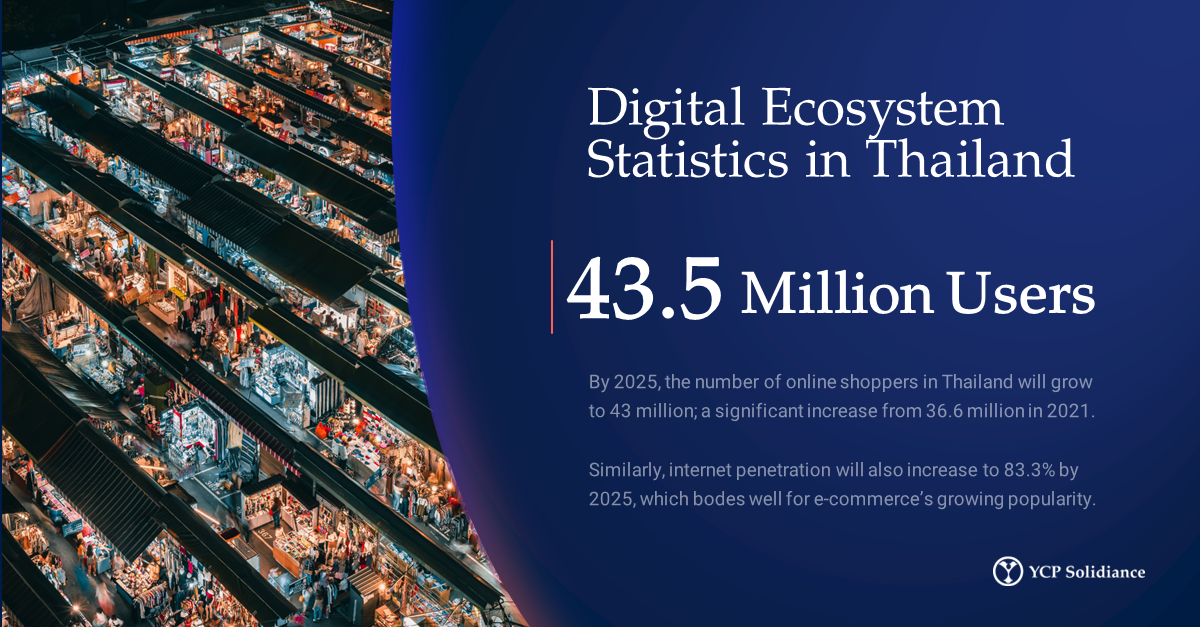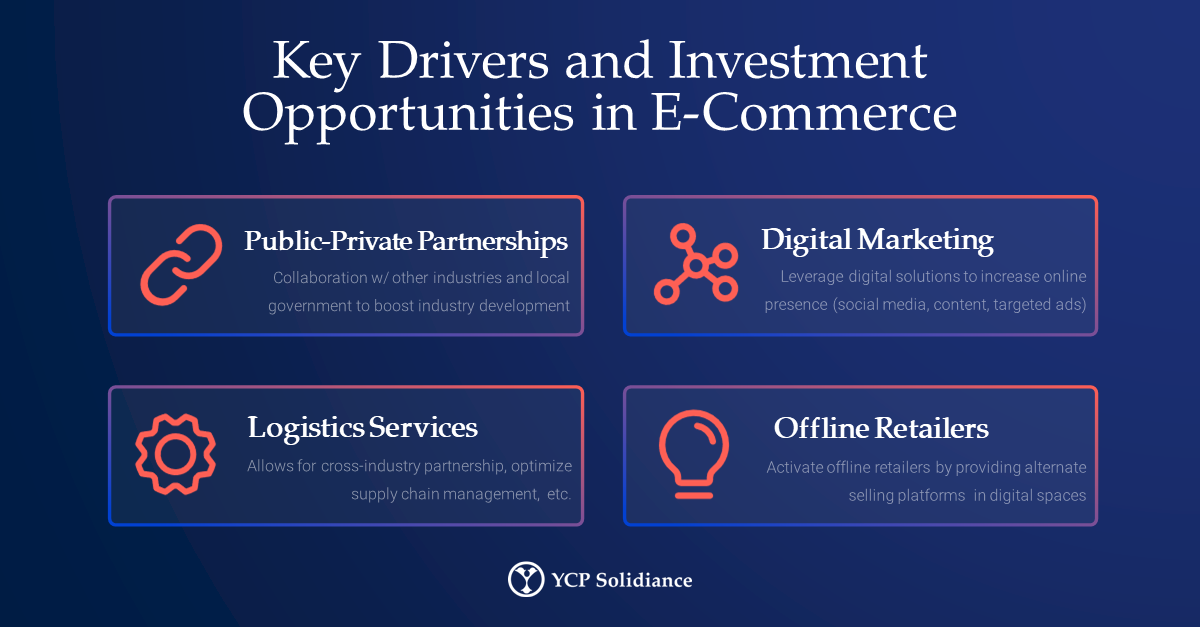This article was developed and guided by expert insight from the YCP Solidiance team based in Thailand, whose team members have years of relevant experience spanning several years and industries.
Like many other countries in Asia, Thailand has witnessed tremendous e-commerce growth over the last few years. Specifically, the current market size of the e-commerce sector in Thailand is approximately 11,000 million USD in terms of Gross Merchandise Value (GMV). The sector is also projected to grow even further as current estimations reflect a CAGR of 25% over the next five years spanning 2021 to 2025.
Considering that e-commerce is expected to continue its development owing to several factors, read below to understand what businesses and professionals based in Thailand can expect this 2022 and beyond.
Identifying Key Drivers
To fully capitalize on e-commerce, interested parties should first identify key drivers that will likely bolster development in the coming years. One area that should be of interest to potential stakeholders is the collaboration that e-commerce naturally entails with other industries and sectors.
For example, for e-commerce platforms to successfully deliver products in a fast and timely manner, logistics players have also seen increases in demand. This has manifested in several ways, such as the subscription of e-commerce companies to third-party logistics (3PL) services to aid in supply chain management as outsourcing could improve operational efficiency and turnover.
Another area where e-commerce has boosted activity is in financial technology, or the fintech sector. To minimize contact and improve accessibility, financial institutions have worked to integrate extensive payment options onto e-commerce marketplaces. For fintech players to cater to individuals from varying demographics, payment options like cash on delivery, installments, mobile wallets, or platform tokens are currently being utilized.
Beyond the logistical and financial side of e-commerce, new investors can also look to other important facets of the sector such as the business-to-business (B2B) or retail. A recent trend among businesses like large retailers and grocery stores has been to activate online by selling their products via digital marketplaces and platforms. Doing so not only increases exposure to online audiences which builds a digital identity, but perhaps more importantly, it also maximizes the reach of businesses as product purchasing is almost instantaneous given the accessibility that e-commerce offers.
Thus, for new market entrants, there exist several promising opportunities to involve themselves in Thailand’s developing e-commerce industry. As early as now, potential investors should look to explore closely related industries as cross-collaboration will likely continue as the Thailand e-commerce landscape matures.
Tips for E-Commerce Investment
Given how the e-commerce ecosystem entails digital engagement, not only in Thailand but also the rest of the world, stakeholders should prioritize investing in online marketing and advertising as these tools will significantly increase the likelihood of success. Investing in these areas will not only prove fruitful for e-commerce platforms themselves, but also for brands and retailers that operate on these applications. There are several digital marketing tools that can be leveraged by involved parties, such as targeted advertising, social media engagement, digital content, etc. These tools will translate to favorable advantages, like increased platform traffic, diversification of target audience, and actionable data on consumer behavior and spending habits, among others.
Furthermore, to better secure e-commerce investments, partnerships should also be considered. Going beyond the common e-commerce dynamics of B2C and B2B, potential e-commerce investors should examine the possibility of public-private partnerships (PPPs), especially since the government has taken an interest in e-commerce growth.
Attempting to support industry-wide progress, the government has recently set forth to achieve the following goals this 2022: (1) e-commerce market to generate 5.2 billion THB; (2) increase the value of e-commerce SMEs by at least 5%; (3) increase value of outbound cross-border e-commerce sales by at least 5%; and (4) officially register at least 10,000 e-commerce merchants and companies per annum. With these goals in mind, the Thai government is keen on bolstering development, which also means that they are open to potential partnerships that may prove conducive to e-commerce development.
Overall, the current outlook of the e-commerce industry in Thailand is positive as evidenced by the advancement that it is currently experiencing. In the coming years, the ecosystem surrounding this industry will gradually mature so new entrants should invest as early as possible. Even if this sector has drastically benefitted from the restrictions brought about by the spread of COVID-19, expect e-commerce to continue to trend successfully as it is here to stay well beyond the context of the global pandemic.
To get further insight into how e-commerce is developing in other countries, and what trends are dominating these markets, subscribe to our newsletter here and check out these reports:






